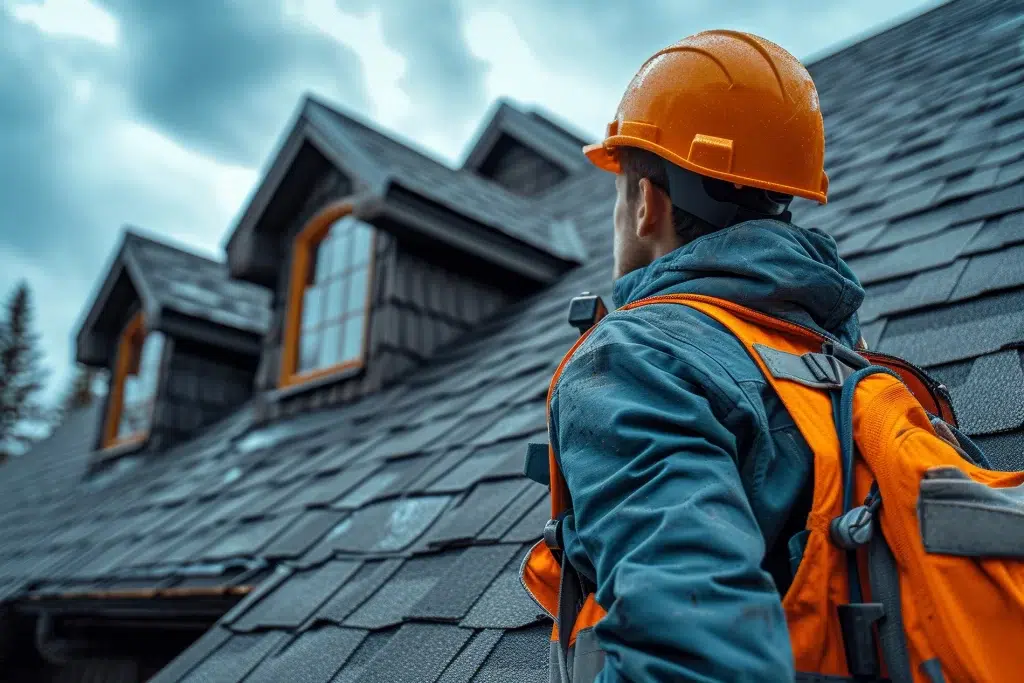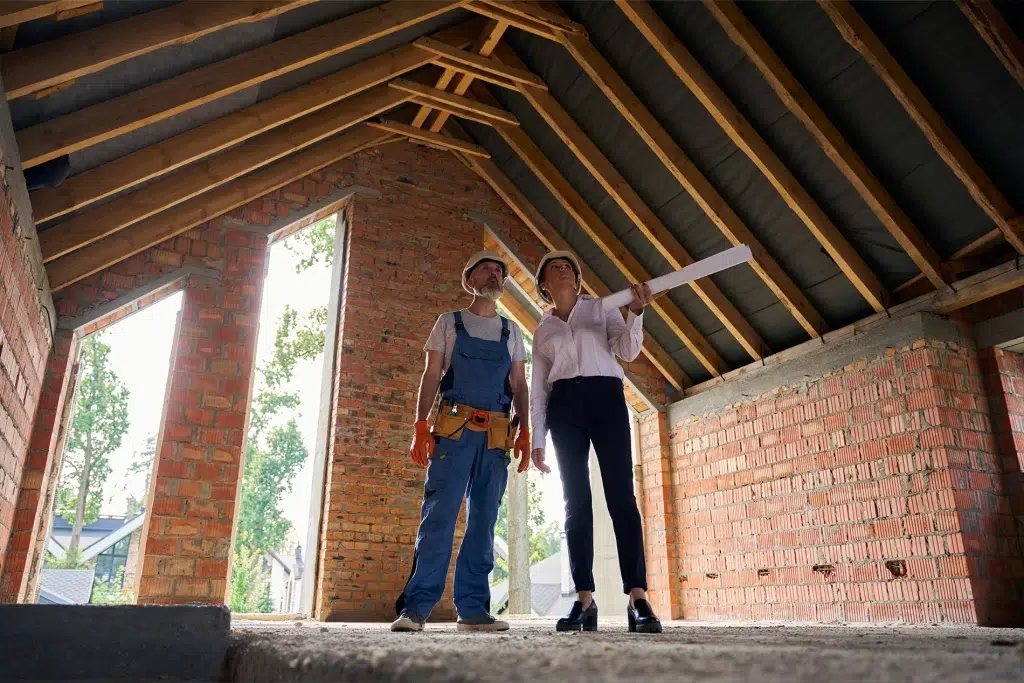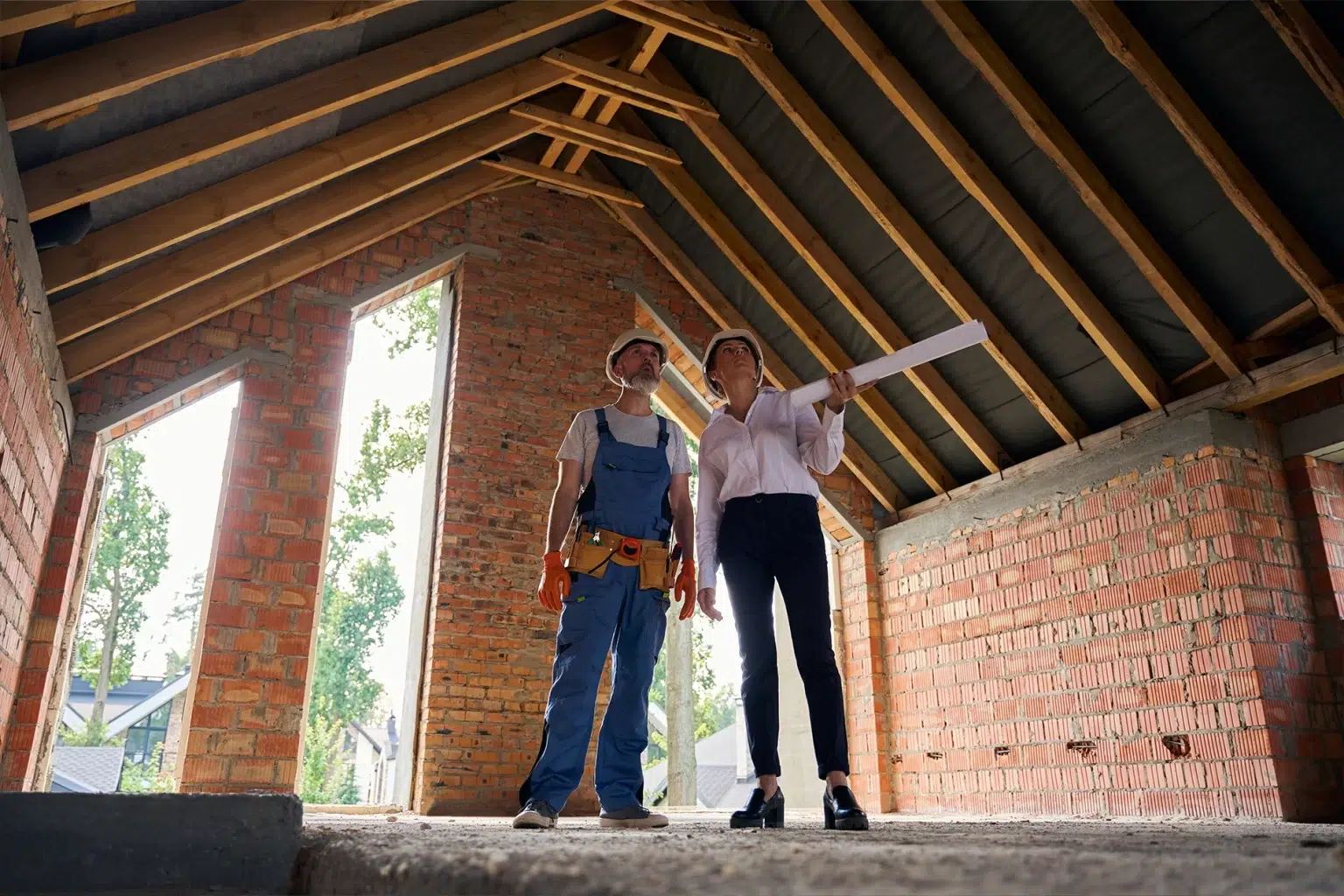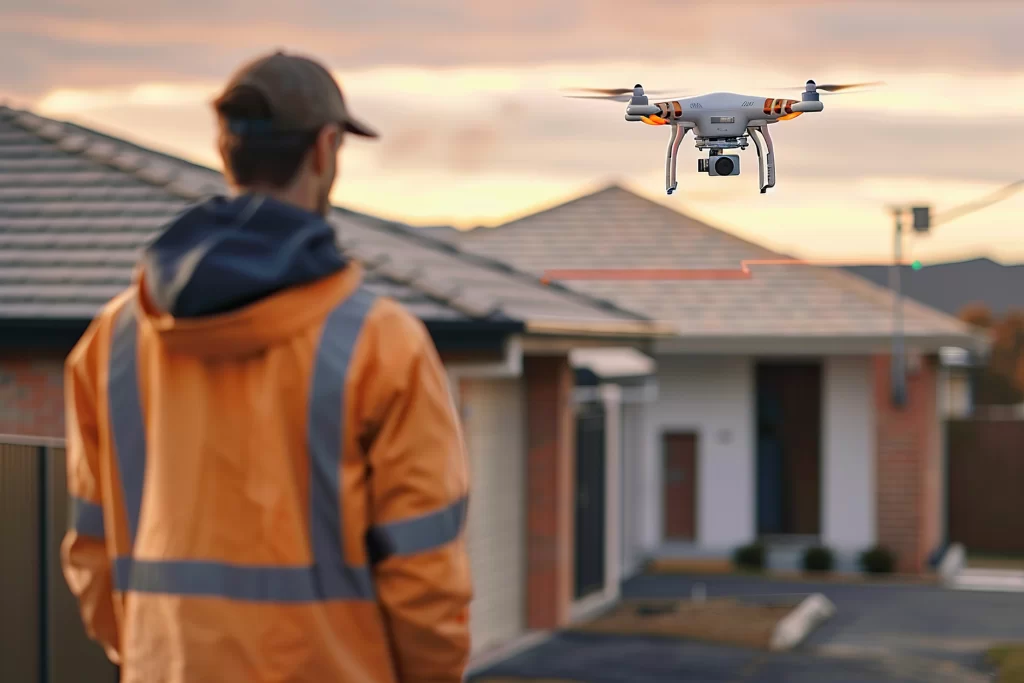Regular roof maintenance is crucial for every homeowner. Neglecting your roof can lead to expensive repairs and significant damage to your home. By following a roof inspection checklist, you can identify and address potential problems early. This will ensure your roof remains in excellent condition.
Understanding Your Roof
Understanding your roof is the first step in preventing common issues. This guide will give you a starting place for understanding your roof. Further research may be necessary.
Types of Roofing Material
Different types of roofing materials require unique maintenance strategies. Common roofing materials include asphalt shingles, metal roofs, wood shakes, and tiles. Each has its advantages and maintenance needs, influencing the overall inspection process.
How Roofing Materials Impact Maintenance
Asphalt shingles are prone to granule loss and curling, while metal roofs might suffer from rust or loose fasteners. Understanding these specifics helps tailor your inspection and maintenance efforts effectively. Take a little time to understand your specific roofing material. Learn its strengths and weaknesses, maintenance needs, and common issues associated with it.
Why Roof Inspections are Crucial
Your roof may be the ultimate out of sight out of mind. For most of us, every day matters of life and career and family consume most of our time and attention. We may not think about the roof until an issue forces us to. Scheduling regular roof inspections ensures you catch issues as quickly as possible.
Preventing Water Damage
Water damage is one of the most severe consequences of a poorly maintained roof. Regular inspections can help spot and fix leaks before they cause significant harm to your home’s structure and interior.

Identify Potential Problems Early
Finding problems early, like missing shingles, damaged flashing, or clogged gutters, can stop small issues from becoming costly repairs. Regular inspections and simple roof repairs can save you money in the long run.

Why Roof Inspections are Crucial
Your roof may be the ultimate out of sight out of mind. For most of us, every day matters of life and career and family consume most of our time and attention. We may not think about the roof until an issue forces us to. Scheduling regular roof inspections ensures you catch issues as quickly as possible.
Preventing Water Damage
Water damage is one of the most severe consequences of a poorly maintained roof. Regular inspections can help spot and fix leaks before they cause significant harm to your home’s structure and interior.
Identify Potential Problems Early
Finding problems early, like missing shingles, damaged flashing, or clogged gutters, can stop small issues from becoming costly repairs. Regular inspections and simple roof repairs can save you money in the long run.
Roof Inspection Checklist
Use the following roof inspection checklist as an outline. The goal is to keep an eye on every aspect of your roofing system.
Checking for Visible Damage
Look for signs of damage, such as cracked or missing shingles, rust spots on metal roofs, or damaged tiles. Ensure there are no sagging areas or debris build-up.
Inspecting Individual Shingles and Tiles
For asphalt roofs, check for blistering, curling, or buckling shingles. For tile roofs, look for broken or loose tiles and ensure they are securely in place.
Roof Decking
Roof decking supports the roofing materials and helps maintain the roof’s structural integrity. Weak or damaged decking can compromise the entire roof system. Look for sagging or warped areas, especially around the roof edges and valleys. If you notice any issues, consider professional evaluation and repair.
Gutters and Drainage
Clean your gutters regularly to prevent clogs that can cause water to back up and damage the roof. Make sure any downspouts direct water away from the foundation. To ensure proper drainage, check that water flows freely through the gutters and downspouts. Look for signs of water overflow or pooling near the foundation.
Flashing and Seals
Examine the flashing around chimneys, vents, and skylights. Ensure it is intact and free from rust or damage, as compromised flashing can lead to leaks. Check the seals around vents and chimneys for cracks or gaps and reseal any areas where you notice damage.
Specific Areas to Inspect
Conducting a roof inspection can be challenging without a clear understanding of what and where to inspect. Your roof inspection checklist should include specific areas so you don’t miss any part of the process.
Attic and Interior Inspection
Inspect the attic and interior ceilings for signs of water damage, such as stains, mold, or mildew. These can indicate leaks or poor ventilation. Ensure your attic insulation is dry and in good condition. Wet or compressed insulation can signal a roof leak.


Specific Areas to Inspect
Conducting a roof inspection can be challenging without a clear understanding of what and where to inspect.
Attic and Interior Inspection
Inspect the attic and interior ceilings for signs of water damage, such as stains, mold, or mildew. These can indicate leaks or poor ventilation. Ensure your attic insulation is dry and in good condition. Wet or compressed insulation can signal a roof leak.
Exterior Roof Inspection
Examine the roof edges for damage or wear. Check for loose or missing shingles and ensure the drip edge is in place to prevent water from seeping under the roof. Look for damage caused by high winds, such as lifted or torn shingles. High winds can also loosen roof fasteners, so make sure that everything is secure.
Special Roof Types
For metal roofs, check for rust, loose fasteners, and sealant deterioration. Ensure there are no gaps where panels overlap.
Residential roofing, such as asphalt shingles or tiles, requires regular inspections for wear and tear. Pay special attention to areas prone to damage, like roof valleys and eaves.
Common Roof Problems
This list is by no means exhaustive, but will give you an idea of common things to look for. Knowing what your roof looks like when it is in good condition helps identify other problems that may arise.
Identifying Roof Leaks
Locate roof leaks by inspecting the attic during a rainstorm. Examine for wet spots, drips, or water stains after a rainstorm. Use a flashlight to trace the source of the leak.
Dealing with Missing or Broken Shingles
Replace missing or broken shingles promptly to prevent water damage. Ensure the new shingles match the existing ones in color and material.
Addressing Roof Mold and Mildew
Clean any mold or mildew from the roof surface using a solution of water and mild detergent. Ensure the roof has proper ventilation to prevent future growth.

When to Call a Professional
Hire a roofing contractor for complex repairs or when your roof shows significant damage. A reputable professional roofer will complete repairs correctly and safely.
Benefits of Professional Roof Inspections
Professional roof inspections provide a thorough evaluation of your roof’s condition. Experts can identify issues you might miss and recommend appropriate solutions.
Finding Reliable Roofing Companies
Research and choose reliable roofing companies with good reviews and proper licensing. Ask for recommendations from friends or neighbors who have had positive experiences.

When to Call a Professional
Hire a roofing contractor for complex repairs or when your roof shows significant damage. A reputable professional roofer will complete repairs correctly and safely.
Benefits of Professional Roof Inspections
Professional roof inspections provide a thorough evaluation of your roof’s condition. Experts can identify issues you might miss and recommend appropriate solutions.
Finding Reliable Roofing Companies
Research and choose reliable roofing companies with good reviews and proper licensing. Ask for recommendations from friends or neighbors who have had positive experiences.
Regular Maintenance Tips
Regular maintenance goes a long way toward preventing issues and increasing your roof’s longevity. Taking a little time throughout the year will save you money and hassle over time.
Scheduling Regular Roofing Inspections
Schedule roof inspections at least twice a year, in spring and fall. Regular inspections help catch issues early and extend the life of your roof.
Importance of Preventive Measures
Preventive measures, such as trimming overhanging branches and clearing debris, can protect your roof from damage. Regular maintenance minimizes the risk of costly repairs.
How Regular Maintenance Prevents Costly Repairs
Consistent maintenance helps avoid major issues by addressing minor problems early. This approach saves money and prolongs the lifespan of your roof.
Frequently Asked Questions
Consider the following most frequently asked questions as you plan your roof inspections and maintenance.
How often should I inspect my roof?
You should inspect your roof at least twice a year and after major storms to catch any damage early.
What are the signs my roof needs to be repaired or replaced?
Signs include missing or damaged shingles, water stains on ceilings, sagging roof areas, and increased energy bills.
Can I perform a roof inspection myself?
Yes, but be cautious and prioritize safety. Use binoculars for a ground-level inspection and avoid walking on the roof if possible. Most roofing companies offer a free inspection. If you do need to walk on the roof, you need to be wearing the proper footwear.
What is the best time of year for a roof inspection?
Spring and fall are ideal for roof inspections because of moderate weather conditions.
How do I choose a reliable roofing contractor?
Look for contractors with good reviews, proper licensing, and insurance. Ask for written estimates and check their references.
Maintain a Strong, Durable Roof
Regular roof maintenance is essential for preventing common issues and extending the life of your roof. Using a strong roof inspection checklist and implementing these tips will help you maintain a strong and durable roof.


